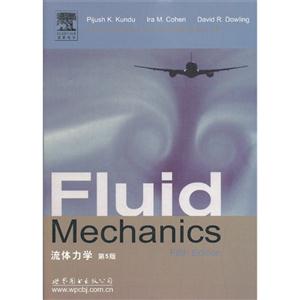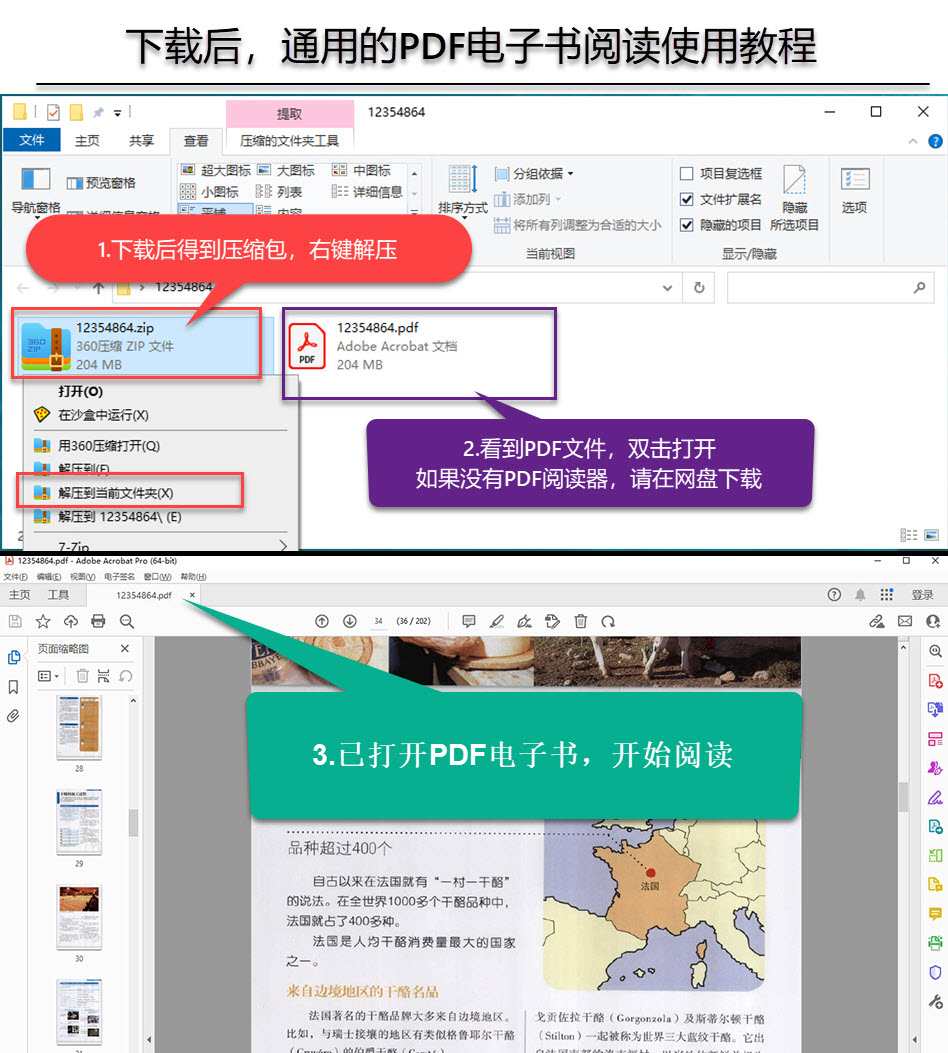流体力学-第5版
内容简介
[
流体力学是研究流体在不同作用力下相互作用行为以及其在各个领域的应用,不管是在在流体中、气态中或者在这两态中,《流体力学(第5版)(英文影印版)》都有包括。这本书是第5版,作者做了全面更新和修订,适用于流体力学专业的高年级本科生和研究生。这本流体力学的高级教程包含一份免费光盘,有了这份光盘,读者通过将近1000流体视频片段更深入了解流体力学的精髓;可以在超过20的模拟实验室和仿真中进行流体模拟;可以观看众多其他的新的进展,从而在很大程度上提高了他们的流体力学学习经验。
目次:导引;carresian张量;运动学;守恒定律;漩涡动力学;理想流;引力波;层流;边界层和相关论题;计算流体力学;不稳定性;湍流;地球物理流体力学;空气动力学;可压缩流;生物流体力学导引。
读者对象:流体力学专业的学生、老师和相关的科研从业人员。
]
目录
《流体力学(第5版)(英文影印版)》about the dvd xviipreface xixcompanion website xxacknowledgments xxinomenclature xxii1. introduction1.1. fluid mechanics1.2. units of measurement1.3. solids, liquids, and gases1.4. continuum hypothesis1.5. molecular transport phenomena1.6. surface tension1.7. fluid statics1.8. classical thermodynamicsfirst law of thermodynamicsequations of statespecific heatssecond law of thermodynamicsproperty relationsspeed of soundthermal expansion coefficient1.9. perfect gas1.10. stability of stratified fluid mediapotential temperature and densityscale height of the atmosphere1.11. dimensional analysisstep 1. select variables and parametersstep 2. create the dimensional matrixstep 3. determine the rank of the dimensional matrixstep 4. determine the number of dimensionless groupsstep 5. construct the dimensionless groupsstep 6. state the dimensionless relationshipstep 7. use physical reasoning or additional knowledge to simplifythe imensionlesselationshipexercisesliterature citedsupplemental reading2. cartesian tensors2.1. scalars, vectors, tensors, notation2.2. rotation of axes: formal definition of a vector2.3. multiplication of matrices2.4. second-ordertensors2.5. contraction and multiplication2.6. force on a surface2.7. kronecker delta and altemating tensor2.8. vector, dot, and cross products2.9. gradient, divergence, and curl2.10. symmetric and antisymmetric tensors2.11. eigenvalues and eigenvectors of a symmetric tensor2.12. gauss’ theorem2.13. stokes’theorem2.14. comma notationexercisesliterature citedsupplemental reading3. kinematics3.1. introduction and coordinate systems3.2. particle and field descriptions of fluid motion3.3. flow lines, fluid acceleration, and galileantransformation3.4. strain and rotation ratessummary3.5. kinematics of simple plane flows3.6. reynolds transport theoremexercisesliterature citedsupplemental reading4. conservation laws4.1. introduction4.2. conservation of mass4.3. stream functions4.4. conservation of momentum4.5. constitutive equation for a newtonian fluid4.6. navier-stokes momentum equation4.7. noninertial frame of reference4.8. conservation of energy4.9. special forms of the equationsangular momentum principle for a stationary control volumebemoulli equationsneglect of gravity in constant density flowsthe boussinesq approximationsummary4.10. boundary conditionsmoving and deforming boundariessurface tension revisited4.11. dimensionless forms of the equations and dynamicsimilarityexercisesliterature citedsupplemental reading5. vorticity dynamics5.1. introduction5.2. kelvin’s circulation theorem5.3. helmholtz’s vortex theorems5.4. vorticity equation in a nonrotating frame5.5. velocity induced by a vortex filament: lawof blot and savart5.6. vorticity equation in a rotating frame5.7. interaction of vortices5.8. vortex sheetexercisesliterature citedsupplemental reading6. ideal flow6.1. relevance of irrotational constant-density flow theory6.2. two. dimensional stream function and velocity potential6.3. construction of elementary flows in two dimensions6.4. complex potential6.5. forces on a two-dimensional bodyblasius theoremkutta-zhukhovsky lift theorem6.6. conformal mapping6.7. numerical solution techniques in two dimensions6.8. axisymmetric ideal flow6.9. three-dimensional potential flow and apparent mass6.10. concluding remarksexercisesliterature citedsupplemental reading7. gravity waves7.1. introduction7.2. linear liquid-surface gravity wavesapproximations for deep and shallow water7.3. influence of surface tension7.4. standing waves7.5. group velocity, energy flux, and dispersion7.6. nonlinear waves in shallow and deep water7.7. waves on a density interface7.8. internal waves in a continuously stratified fluidinternal waves in a stratified fluiddispersion of internal waves in a stratified fluidenergy considerations for internal waves in a stratifiedfluidexercisesliterature cited8. laminar flow8.1. introduction8.2. exact solutions for steady incompressible viscous flowsteady flow between parallel platessteady flow in a round tubesteady flow between concentric rotating cylinders8.3. elementary lubrication theory8.4. similarity solutions for unsteady incompressible viscousflow8.5. flow due to an oscillating plate8.6. low reynolds number viscous flow past a sphere8.7. final remarksexercisesliterature citedsupplemental reading9. boundary layers and related topics9.1. introduction9.2. boundary-layer thickness definitions9.3. boundary layer on a flat plate: blasius solution9.4. falkner-skan similarity solutions of the laminarboundary-layer equations9.5. von karman momentum integral equation9.6. thwaites’ method9.7. transition, pressure gradients,and boundary-layer separation9.8. flow past a circular cylinderlow reynolds numbersmoderate reynolds numbershigh reynolds numbers9.9. flow past a sphere and the dynamics of sports ballscricket ball dynamicstennis ball dynamicsbaseball dynamics9.10. two-dimensional jets9.11. secondary flowsexercisesliterature citedsupplemental reading10. computational fluid dynamicshoward h. hu10.1. introduction10.2. finite-differencemethodapproximation to derivativesdiscretization and its accuracyconvergence, consistency, and stability10.3. finite-elementmethodweak or variational form of partial differential equationsgalerkin’s approximation and finite- element interpolationsmatrix equations, comparison withfinite-difference methodelement point of view of the finite- element method10.4. incompressible viscous fluid flowconvection-dominated problemsincompressibility conditionexplicit maccormack schememac scheme~-schememixed finite-element formulation10.5. three examplesexplicit maccormack scheme for driven-cavity flow problemexplicit maccormack scheme for flow over a square blockfinite-element formulation forflow over a cylinder confined ina channel10.6. concluding remarksexercisesliterature citedsupplemental reading11. instability11.1. introduction11.2. method of normal modes11.3. kelvin-helmholtzlnstability11.4. thermal instability: the b~nard problem11.5. double-diffusive instability11.6. centrifugal instability: taylor problem11.7. instability of continuously stratified parallel flows11.8. squire’s theorem and the orr-sommeffeld equation11.9. inviscid stability of parallel flows11.10. results for parallel and nearly parallel viscous flowstwo-stream shear layerplane poiseuille flowplane couette flowpipe flowboundary layers with pressure gradients11.11. experimental verification of boundary-layerinstability11.12. comments on nonlinear effects11.13. transition11.14. deterministic chaosclosureexercisesliterature cited12. turbulence12.1. introduction12.2. historical notes12.3. nomenclature and statistica for turbulent flow12.4. correlations and spectra12.5. averaged equations of motion12.6. homogeneous isotropic turbulence12.7. turbulent energy cascade and spectrum12.8. free turbulent shear flows12.9. wall-bounded turbulent shear flowsinner layer: law of the wallouter layer: velocity defect lawoverlap layer: logarithmic lawrough surfaces12.10. turbulence modelinga mixing length modelone-equation modelstwo-equation models12.11. turbulence in a stratified mediumthe richardson numbersmonin-obukhov lengthspectrum of temperature fluctuations12.12. taylor’s theory of turbulent dispersionrate of dispersion of a single particlerandom walkbehavior of a smoke plume in the windturbulent diffusivity12.13. concluding remarksexercisesliterature citedsupplemental reading13. geophysical fluid dynamics13.1. introduction13.2. vertical variation of density in the atmosphere andocean13.3. equations of motion13.4. approximate equations for a thin layer ona rotating spheref-plane model/~-plane model13.5. geostrophicflowthermal windtaylor-proudman theorem13.6. ekman layer at a free surfaceexplanation in terms of vortex tilting13.7. ekman layer on a rigid surface13.8. shallow-waterequations13.9. normal modes in a continuously stratified layerboundary conditions on ~vertical mode solution for uniform nsummary13.t0. high- and low-frequency regimes in shallow-waterequations13.11. gravity waves with rotationparticle orbitinertial motion13.12. kelvin wave13.13. potential vorticity conservation inshallow~water theory13.14. intemal waveswkb solutionparticle orbitdiscussion of the dispersion relationlee wave13.15. rossby wavequasi~geostrophic vorticity equationdispersion relation13.16. barotropicinstabitity13.17. barocliniclnstabilityperturbation vorticity equationwave solutioninstability criterionenergetics13.18. geostrophicturbulenceexercisesliterature citedsupplemental reading14. aerodynamics14.1. introduction14.2. aircraft terminologycontrol surfaces14.3. characteristics of airfoil sectionshistorical notes14.4. conformal transformation for generating airfoil shapes14.5. lift of a zhukhovsky airfoil14.6. elementary lifting line theory for wings of finite spanlanchester versus prandtl14.7. lift and drag characteristics of airfoils14.8. propulsive mechanisms of fish and birds14.9. sailing against the windexercisesliterature citedsupplemental reading15. compressible flow15.1. introductionperfect gas thermodynamic relations15.2. acoustics15.3. basic equations for one-dimensional flow15.4. reference properties in compressible flow15.5. area-velocity relationship in one-dimensional isentropicflow15.6. normal shock wavesstationary normal shock wave in a moving mediummoving normal shock wave in a stationary mediumnormal shock structure15.7. operation of nozzles at different back pressuresconvergent nozzleconvergent-divergent nozzle15.8. effects of friction and heating in constant-area ductseffect of frictioneffect of heat transfer15.9. pressure waves in planar compressible flow15.10. thin airfoil theory in supersonic flowexercisesliterature citedsupplemental reading16. introduction to biofluid mechanicsportonovo s, ayyaswamy16.1. introduction16.2. the circulatory system in the human bodythe heart as a pumpnature of bloodnature of blood vessels16.3. modeling of flow in blood vesselssteady blood flow theorypulsatile blood flow theoryblood vessel bifurcation: an application of poiseuille’s formulaand murray’s lawflow in a rigid-walled curved tubeflow in collapsible tubeslaminar flow of a casson fluid in a rigid-walled tubepulmonary circulationthe pressure pulse curve in the right ventricleeffect of pulmonary arterial pressure on pulmonary resistance16.4. introduction to the fluid mechanics of plantsexercisesacknowledgmentliterature citedsupplemental readingappendix aappendix bappendix cappendix dindex
封面

书名:流体力学-第5版
作者:(印)坤杜 著
页数:891
定价:¥179.0
出版社:世界图书出版公司
出版日期:2013-01-01
ISBN:9787510052644
PDF电子书大小:34MB 高清扫描完整版
本文标题:《流体力学-第5版》PDF下载
资源仅供学习参考,禁止用于商业用途,请在下载后24小时内删除!

